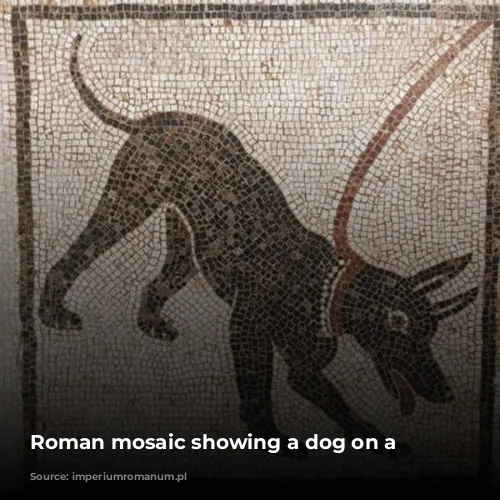Animals were an integral part of Roman life, playing various roles from religious rituals to everyday activities. Let’s dive into the fascinating world of animals in ancient Rome!
Animals in Roman Religion
The Romans inherited a complex religious system from the Etruscans, where animals were central to rituals. They believed that understanding the gods’ intentions was crucial and sought guidance from the natural world, including the behavior of animals.
Sacrificing animals was a common practice, with the entrails, particularly the liver, being meticulously examined for signs. The flight patterns of birds, such as vultures and ravens, were also considered significant. This belief system, known as auspices, heavily influenced Roman decision-making, even in military affairs.
A famous example is the story of Claudius Pulcher, the commander of the Roman fleet during the First Punic War. He consulted chickens before battle, hoping for a favorable omen. However, the chickens refused to eat the offered grain, leading to Claudius’ anger and a disastrous defeat.
This story illustrates how deeply ingrained the belief in animal omens was in Roman society.

Hunting: A Sport for the Elite
While hunting was practiced for food, it was more of a sport and pastime for the Romans, particularly the wealthy. Dogs and horses were essential tools in the hunt, and their number reflected the hunter’s wealth and social standing.
Dogs were highly prized for their loyalty and hunting skills. They were capable of tracking prey and providing silent, yet clear, signals to their handlers. Even aged or blind dogs were valued for their keen sense of smell, guiding hunters to hidden game.
The Romans even bred a hybrid dog-tiger by mating dogs with captive tigresses. This suggests their fascination with the power and ferocity of these animals.
Dogs: Loyal Companions and Guardians
Beyond hunting, dogs played a crucial role in Roman daily life. They served as guardians for homes and farms, their presence signified by the warning “Cave Canem” (“Beware of the Dog”) inscribed on thresholds.
Dogs were also treasured companions, often featured in homes and poetry. Martial dedicates an entire epigram to a beloved dog named Issa, comparing her to a sparrow and praising her loyalty and playful nature.
This shows that the Romans held deep affection for their canine companions, as seen in tomb inscriptions dedicated to their “four-legged friends.”
A Feast of Wild Game: From Boar to Birds
Hunting for food was also a significant part of Roman life, with wild boar being a popular delicacy. However, the introduction of wild game to Roman tables met with resistance from some, including the conservative Cato the Elder.
The demand for wild boar eventually led to raising these animals in captivity, as Romans sought to enjoy this luxury without depending solely on hunting.
Other wild animals, including hares and birds, were also hunted using various methods such as traps, snares, and nets. Pliny the Younger describes his own hunting excursions, highlighting the leisurely and contemplative approach to the sport.
Fish Farming: A Growing Industry
Fishing was a common practice for both recreation and sustenance. Romans developed techniques for catching fish, using nets, fishing rods, and even traps. They also farmed fish in ponds and pools, a practice that demonstrates their growing understanding of aquaculture.
Special attention was paid to the imperial table, with fishermen obligated to present any rare or unusual catches to the emperor. This highlights the power and privilege of the ruling class in Roman society.
Dolphins: Creatures of Legend and Lore
Dolphins held a special place in Roman mythology and culture. These intelligent and playful animals were seen as good omens and associated with the gods of the sea.
They were often depicted in art and literature, and their behavior was closely studied. This admiration for dolphins is reflected in the numerous coins bearing their image, a testament to their cultural significance.
Pigeons: Messengers of Peace and War
Pigeons, like dogs, played diverse roles in Roman life. They were a source of food and prized for their meat, especially turtle doves.
But their most significant contribution was in communication, particularly in wartime. The Romans understood the value of pigeons as messengers, using them to transmit messages across vast distances.
This practice of using pigeons for communication is not a modern invention but dates back to ancient times, demonstrating the Romans’ ingenuity in harnessing the capabilities of these creatures.
Conclusion
Animals were integral to the fabric of Roman society, contributing to their religious practices, recreational activities, food supply, and communication systems. From the revered role of dogs as companions and guardians to the captivating presence of dolphins in myth and legend, animals played diverse and fascinating roles in the lives of the Romans, providing insights into their beliefs, values, and daily life.
